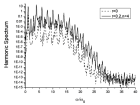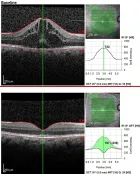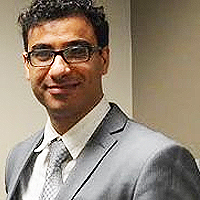Abstract
Research Article
The factors associated with mental health and the impact of COVID-19
Linda Martinez*, Rebecca Perley, Salim Alani and Henry O’Lawrence
Published: 11 August, 2022 | Volume 3 - Issue 1 | Pages: 048-053
The mental health impact caused by COVID-19 on adolescents was reviewed, and due to limited data, adult results were included, to support our assertion that additional mental health resources are needed for both adult and young people. Positive gains would include improved socio-emotional skills, a decrease in maladaptive behaviors contributing to the disruption in interpersonal relationships and lifetime achievements, suicide attempts and psychopathology, persistent mental health concerns found in the juvenile justice and foster care systems and substance use addiction later in adulthood (The American Psychological Association, 2019; Garber & Weersing, 2010; Office of Juvenile Justice and Delinquency Prevention, n.d.; Tomasello, 2018;). Geiger & Davis, 2019, found that 13% or 3.2 million United States (U.S.) teenagers aged 12 - 17 years old experienced at least one major depressive episode with the depression rate increasing 59% from 2007 to 2017. Therefore, we assert that developing programs to overcome barriers to mental health aid can reduce instances experienced in adolescence and adulthood.
Read Full Article HTML DOI: 10.29328/journal.jcmhs.1001019 Cite this Article Read Full Article PDF
Keywords:
Adult; Adolescents; Mental Health Issues; COVID; Youth; Teenagers; Depression; Suicide; Self-injury
References
- World Health Organization. International. Adolescent mental health. World Health Organization. 2021. https://www.who.int/news-room/fact-sheets/detail/adolescent-mental-health
- National Institute of Mental Health. Mental illness. 2022. https://www.nimh.nih.gov/health/statistics/mental-illness
- Ashworth E. Barriers to access mental health support: Why adolescents don't seek help. National Elf Service. 2020. Retrieved from: https://www.nationalelfservice.net/populations-and-settings/child-and-adolescent/barriers-support-mental-health-adolescents/
- Office of Juvenile Justice and Delinquency Prevention. (n.d.). Intersection between mental health and the Juvenile Justice System. https://ojjdp.ojp.gov/model-programs-guide/literature-reviews
- Tomasello J. Shining a spotlight on systems-involved youth. American Youth Policy Forum. 2018. https://www.aypf.org/blog/shining-a-spotlight/
- Garber J, Weersing VR. Comorbidity of Anxiety and Depression in Youth: Implications for Treatment and Prevention. Clin Psychol (New York). 2010 Dec;17(4):293-306. doi: 10.1111/j.1468-2850.2010.01221.x. PMID: 21499544; PMCID: PMC3074295.
- Lam RW, Kennedy SH, Mclntyre RS, Khullar A. Cognitive dysfunction in major depressive disorder: effects on psychosocial functioning and implications for treatment. Can J Psychiatry. 2014 Dec;59(12):649-54. doi: 10.1177/070674371405901206. PMID: 25702365; PMCID: PMC4304584.
- Kelly TM, Daley DC. Integrated treatment of substance use and psychiatric disorders. Soc Work Public Health. 2013;28(3-4):388-406. doi: 10.1080/19371918.2013.774673. PMID: 23731427; PMCID: PMC3753025.
- Center on the Developing Child. Early childhood mental health (In Brief). 2013. Retrieved fromdevelopingchild.harvard.edu
- American Psychological Association. Child and adolescent mental and behavioral health resolution. 2019. Retrieved from: https://www.apa.org/about/policy/child-adolescent-mental-behavioral-health
- Bogusz GB. Health insurers still don't adequately cover mental health treatment. National Alliance of Mental Illness. 2020; Retrieved May 22, 2022: from https://www.nami.org/Blogs/NAMI-Blog/March-2020/Health-Insurers-Still-Don-t-Adequately-Cover-Mental-Health-Treatment
- Dobransky KM. Reassessing mental illness stigma in mental health care: Competing stigmas and risk containment. Soc Sci Med. 2020 Feb 15;249:112861. doi: 10.1016/j.socscimed.2020.112861. Epub ahead of print. PMID: 32087486.
- Jaworska N, MacQueen G. Adolescence as a unique developmental period. J Psychiatry Neurosci. 2015 Sep;40(5):291-3. doi: 10.1503/jpn.150268. Erratum in: J Psychiatry Neurosci. 2015 Nov;40(6):386. PMID: 26290063; PMCID: PMC4543091.
- California Health and Human Services. (2021). Federal and State Health Laws – California Health and Human Services. Retrieved May 5, 2022: from https://www.chhs.ca.gov/ohii/health-laws/
- Morse G, Salyers MP, Rollins AL, Monroe-DeVita M, Pfahler C. Burnout in mental health services: a review of the problem and its remediation. Adm Policy Ment Health. 2012 Sep;39(5):341-52. doi: 10.1007/s10488-011-0352-1. PMID: 21533847; PMCID: PMC3156844.
- Andersen SL, Teicher MH. Stress, sensitive periods and maturational events in adolescent depression. Trends Neurosci. 2008 Apr;31(4):183-91. doi: 10.1016/j.tins.2008.01.004. Epub 2008 Mar 10. PMID: 18329735.
- Geiger AW, Davis L. December 23). A growing number of American teenagers – Particularly girls – Are facing depression. Pew Research Center. 2020. https://www.pewresearch.org/fact-tank/2019/07/12/a-growing-number-of-american-teenagers-particularly-girls-are-facing-depression/.
- Monto MA, McRee N, Deryck FS. Nonsuicidal Self-Injury Among a Representative Sample of US Adolescents, 2015. Am J Public Health. 2018 Aug;108(8):1042-1048. doi: 10.2105/AJPH.2018.304470. Epub 2018 Jun 21. PMID: 29927642; PMCID: PMC6050840.
- Children and Youth Behavioral Health Specialized Services. Orange County California - Health Care Agency. (n.d.). Retrieved May 22, 2022: from https://www.ochealthinfo.com/about-hca/behavioral-health-services/more-mhrs/children-youth-behavioral-health-cybh/specialized
- Fortune Business Insights. (rep.). The U.S. Behavioral Health Market Size, Share & COVID-19 Impact Analysis, By Type (Behavioral & Mental Health, Substance Abuse, Eating Disorders, Trauma, and Others), By Payor (Public Health Insurance and Private Health Insurance/Out-of-Pocket). 2021; Forecast, 2021-2028. , from https://www.fortunebusinessinsights.com/u-s-behavioral-health-market-105298
- Shore JH. What is Telepsychiatry? 2020. Retrieved from: https://www.psychiatry.org/patients-families/what-is-telepsychiatry
- Baumgartner J, Aboulafia G, McIntosh A. The ACA at 10: How has it impacted mental health care? 2020. Retrieved from: https://www.commonwealthfund.org/blog/2020/aca-10-how-has-it-impacted-mental-health-care
- Larsen K. The need for bold action to address our children's mental health. CalMatters. 2022. Retrieved May 10, 2022: from https://calmatters.org/commentary/2022/03/the-need-for-bold-action-to-address-our-childrens-mental-health/
- Centers for Disease Control and Prevention (CDC). Facts about suicide. Centers for Disease Control and Prevention. 2022. Retrieved May 10, 2022: from https://www.cdc.gov/suicide/facts/index.html
- Czeisler MÉ, Lane RI, Petrosky E, Wiley JF, Christensen A, Njai R, Weaver MD, Robbins R, Facer-Childs ER, Barger LK, Czeisler CA, Howard ME, Rajaratnam SMW. Mental Health, Substance Use, and Suicidal Ideation During the COVID-19 Pandemic - United States, June 24-30, 2020. MMWR Morb Mortal Wkly Rep. 2020 Aug 14;69(32):1049-1057. doi: 10.15585/mmwr.mm6932a1. PMID: 32790653; PMCID: PMC7440121.
- Centers for Medicare & Medicaid Services (CMS). CMS Manual System Pub. 100-07 State Operations Provider Certification. Department of Health & Human Services. 2008; Retrieved May 5, 2022: from https://www.cms.gov/Regulations-andGuidance/Regulations-and-Guidance
- Destinations For Teens Mental Health Treatment Center. (n.d.). Retrieved May 10, 2022: from https://www.destinationsforteens.com/adolescent-teen-mental-health-treatment/
- Reinert M, Fritze D, Nguyen T. The state of mental health in America 2022. Mental Health America. 2021. Retrieved from: www.hhanational .org.
Figures:
Similar Articles
-
Rural adolescent health: Issues, behaviors and self-reported awarenessMolly Jacobs*. Rural adolescent health: Issues, behaviors and self-reported awareness. . 2020 doi: 10.29328/journal.jcmhs.1001001; 1: 001-017
-
How the COVID-19 outbreak affected physician-patient relationshipRoya Dolatkhah*,Ali Fakhari,Keivan Fakhari Dehkharghani. How the COVID-19 outbreak affected physician-patient relationship. . 2020 doi: 10.29328/journal.jcmhs.1001003; 1: 023-025
-
Assessment of knowledge, practice and associated factors towards prevention of novel corona virus among clients attending at Debre Tabor General Hospital, Debre Tabor Town, North West Ethiopia, 2020: Institutional based cross-sectional studyTigabu Desie Emiru*,Tekalign Amera Birlie,Sheganew Fetene Tasew,Abraham Tsedalu Amare,Nigusie Selomon Tibebu,Chalie Marew Tiruneh. Assessment of knowledge, practice and associated factors towards prevention of novel corona virus among clients attending at Debre Tabor General Hospital, Debre Tabor Town, North West Ethiopia, 2020: Institutional based cross-sectional study. . 2020 doi: 10.29328/journal.jcmhs.1001004; 1: 026-034
-
Facing biological risk in child and adolescence neuropsychiatric services during COVID-19 outbreak: Management of protection levels for the direct accessMaria L Tossali*,Carlo Di Brina,Morena Tafuro,Marco Marcelli,Teresa Sebastiani. Facing biological risk in child and adolescence neuropsychiatric services during COVID-19 outbreak: Management of protection levels for the direct access. . 2020 doi: 10.29328/journal.jcmhs.1001006; 1: 047-048
-
Suicide in teenagers during the COVID-19 pandemic in Cuba: actions for its preventionMaydell Pérez Inerárity*,Claudia Elvira Casamayor Leiza,Julio César Pérez Yero,Brayan Chávez Miguel. Suicide in teenagers during the COVID-19 pandemic in Cuba: actions for its prevention. . 2021 doi: 10.29328/journal.jcmhs.1001007; 2: 001-006
-
A retrospective review of the factors that negatively influenced the eradication of polio in South-South, NigeriaPeters Grace E*,Assi Victor,Oko Nnabuike E,Peters Etete J. A retrospective review of the factors that negatively influenced the eradication of polio in South-South, Nigeria. . 2021 doi: 10.29328/journal.jcmhs.1001011; 2: 021-024
-
Knowledge, attitude and practice towards facemask use amid the COVID-19 pandemic among public transport drivers in Debre-Tabor town, EthiopiaGashaw Mehiret Wubet*,Libsuye Yalgaw Zimamu. Knowledge, attitude and practice towards facemask use amid the COVID-19 pandemic among public transport drivers in Debre-Tabor town, Ethiopia. . 2022 doi: 10.29328/journal.jcmhs.1001013; 3: 001-010
-
Risk of activation of human viruses lurking in ambient following COVID-19 prevention supplies excessive useMojtaba Ehsanifar*,Zeinab Yavari,Mohamad Reza Motaghedifar. Risk of activation of human viruses lurking in ambient following COVID-19 prevention supplies excessive use. . 2022 doi: 10.29328/journal.jcmhs.1001014; 3: 011-015
-
Indoor air pollution and behavioral factors affecting to COVID-19 transitionMojtaba Ehsanifar*,Mehravar Rafati,Zeinab Yavari. Indoor air pollution and behavioral factors affecting to COVID-19 transition. . 2022 doi: 10.29328/journal.jcmhs.1001015; 3: 016-020
-
Associations of Exercise Habits and Circulatory Dynamics with Peripheral Lower Limb Body Composition in Healthy Community-dwelling Older IndividualsHaruki Kogo*,Yuh Yamashita,Jun Murata. Associations of Exercise Habits and Circulatory Dynamics with Peripheral Lower Limb Body Composition in Healthy Community-dwelling Older Individuals. . 2022 doi: 10.29328/journal.jcmhs.1001017; 3: 027-034
Recently Viewed
-
Sinonasal Myxoma Extending into the Orbit in a 4-Year Old: A Case PresentationJulian A Purrinos*, Ramzi Younis. Sinonasal Myxoma Extending into the Orbit in a 4-Year Old: A Case Presentation. Arch Case Rep. 2024: doi: 10.29328/journal.acr.1001099; 8: 075-077
-
Timing of cardiac surgery and other intervention among children with congenital heart disease: A review articleChinawa JM*,Adiele KD,Ujunwa FA,Onukwuli VO,Arodiwe I,Chinawa AT,Obidike EO,Chukwu BF. Timing of cardiac surgery and other intervention among children with congenital heart disease: A review article. J Cardiol Cardiovasc Med. 2019: doi: 10.29328/journal.jccm.1001047; 4: 094-099
-
Advancing Forensic Approaches to Human Trafficking: The Role of Dental IdentificationAiswarya GR*. Advancing Forensic Approaches to Human Trafficking: The Role of Dental Identification. J Forensic Sci Res. 2025: doi: 10.29328/journal.jfsr.1001076; 9: 025-028
-
Scientific Analysis of Eucharistic Miracles: Importance of a Standardization in EvaluationKelly Kearse*,Frank Ligaj. Scientific Analysis of Eucharistic Miracles: Importance of a Standardization in Evaluation. J Forensic Sci Res. 2024: doi: 10.29328/journal.jfsr.1001068; 8: 078-088
-
Toxicity and Phytochemical Analysis of Five Medicinal PlantsJohnson-Ajinwo Okiemute Rosa*, Nyodee, Dummene Godwin. Toxicity and Phytochemical Analysis of Five Medicinal Plants. Arch Pharm Pharma Sci. 2024: doi: 10.29328/journal.apps.1001054; 8: 029-040
Most Viewed
-
Evaluation of Biostimulants Based on Recovered Protein Hydrolysates from Animal By-products as Plant Growth EnhancersH Pérez-Aguilar*, M Lacruz-Asaro, F Arán-Ais. Evaluation of Biostimulants Based on Recovered Protein Hydrolysates from Animal By-products as Plant Growth Enhancers. J Plant Sci Phytopathol. 2023 doi: 10.29328/journal.jpsp.1001104; 7: 042-047
-
Sinonasal Myxoma Extending into the Orbit in a 4-Year Old: A Case PresentationJulian A Purrinos*, Ramzi Younis. Sinonasal Myxoma Extending into the Orbit in a 4-Year Old: A Case Presentation. Arch Case Rep. 2024 doi: 10.29328/journal.acr.1001099; 8: 075-077
-
Feasibility study of magnetic sensing for detecting single-neuron action potentialsDenis Tonini,Kai Wu,Renata Saha,Jian-Ping Wang*. Feasibility study of magnetic sensing for detecting single-neuron action potentials. Ann Biomed Sci Eng. 2022 doi: 10.29328/journal.abse.1001018; 6: 019-029
-
Pediatric Dysgerminoma: Unveiling a Rare Ovarian TumorFaten Limaiem*, Khalil Saffar, Ahmed Halouani. Pediatric Dysgerminoma: Unveiling a Rare Ovarian Tumor. Arch Case Rep. 2024 doi: 10.29328/journal.acr.1001087; 8: 010-013
-
Physical activity can change the physiological and psychological circumstances during COVID-19 pandemic: A narrative reviewKhashayar Maroufi*. Physical activity can change the physiological and psychological circumstances during COVID-19 pandemic: A narrative review. J Sports Med Ther. 2021 doi: 10.29328/journal.jsmt.1001051; 6: 001-007

HSPI: We're glad you're here. Please click "create a new Query" if you are a new visitor to our website and need further information from us.
If you are already a member of our network and need to keep track of any developments regarding a question you have already submitted, click "take me to my Query."

















































































































































